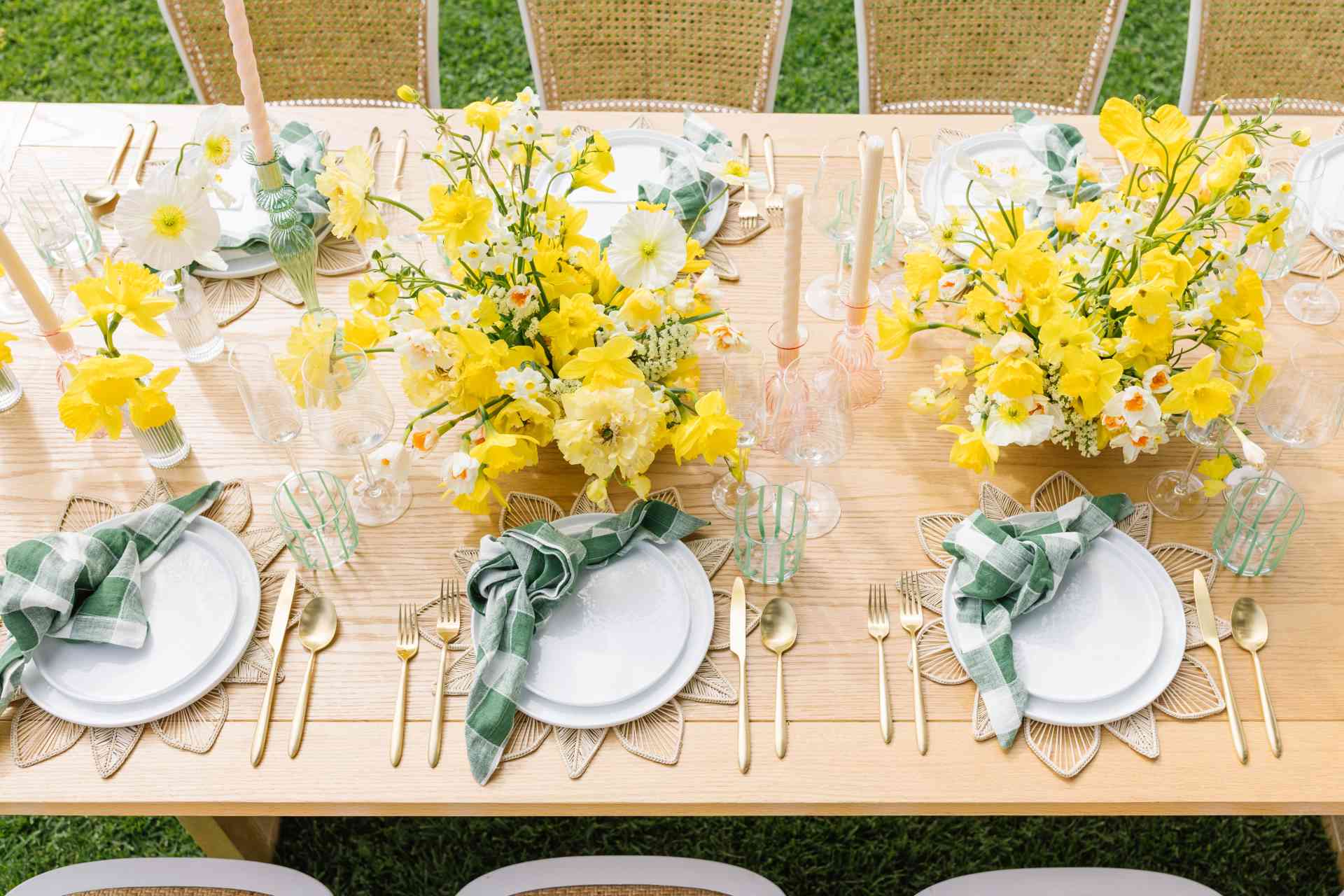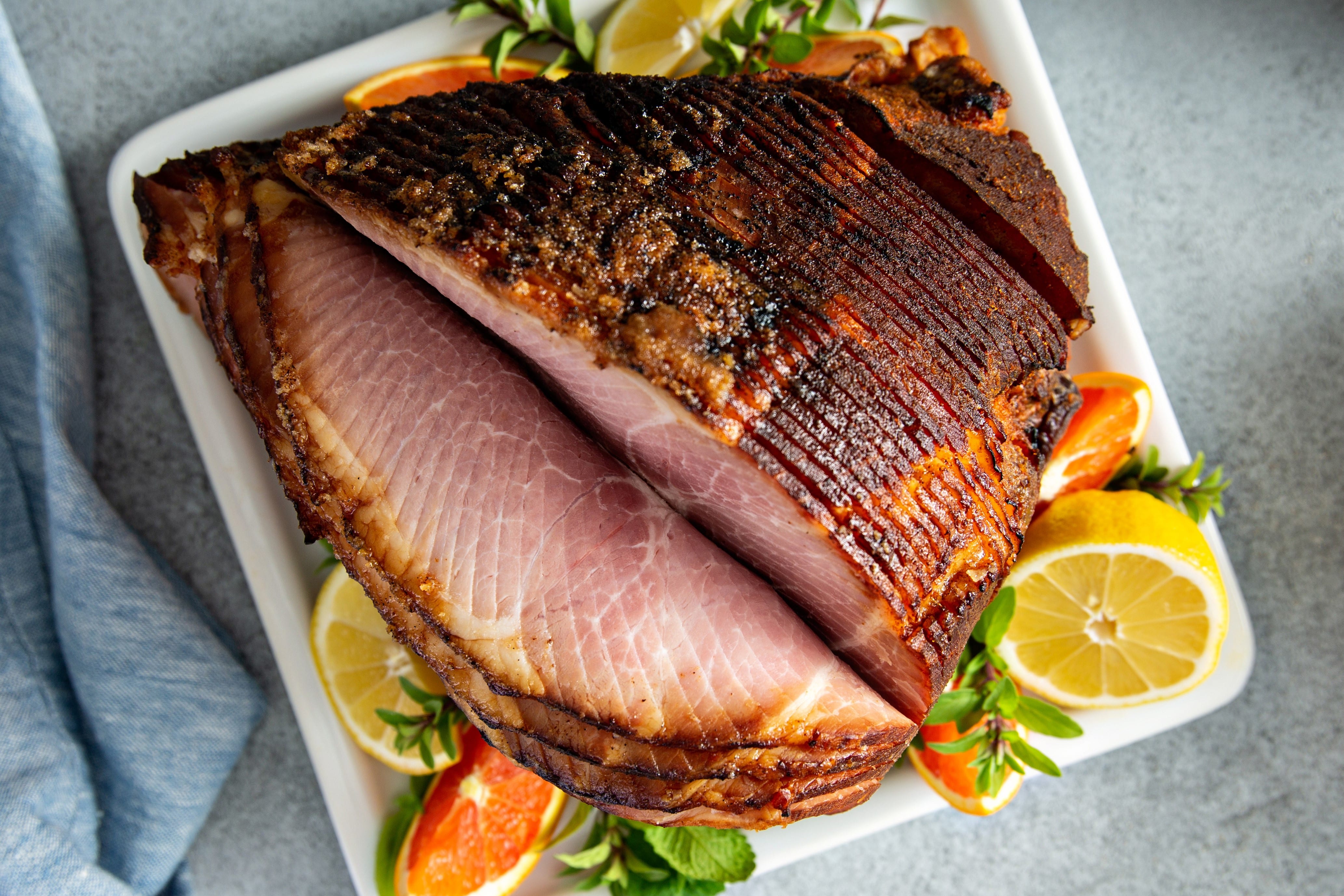Become the Hostess With The Mostest


When you think of Easter, visions of vibrant spring flowers, joyful family gatherings and the delightful anticipation of a special meal may come to mind. At the heart of this celebratory feast often lies a classic favorite: the glazed Easter ham.
This succulent dish is the centerpiece that combines tradition with the flavors of spring. Whether you’re an experienced chef or a first timer tasked with cooking the Easter ham, this guide will walk you through everything from selecting the perfect ham to presenting a beautifully glazed masterpiece that will be the talk of your family gathering.
Hungry for more? From serving platters to tablecloths, napkins and more, our Easter shop has everything you need for the ultimate feast.
Selecting the right ham is the first step toward a delicious Easter dinner. The type of ham you choose can significantly impact both the flavor and texture of your dish.
Here are some considerations to help you make the best choice.
When choosing your Easter ham, it’s essential to understand the distinctions between pre-cooked and raw options.
Most hams available at grocery stores are pre-cooked and labeled as “fully cooked” or “heat and serve,” which means they only require reheating. This type is especially convenient for those looking to save time and effort in the kitchen, as it primarily just needs to be warmed through and glazed for flavor.
However, if you’re up for a culinary adventure and prefer a hands-on approach to flavor and texture, you might opt for a raw ham, also known as “fresh ham.” This type requires full cooking, which allows for more control over the seasoning and final taste. Raw hams are less common but can be found at specialty markets or ordered from butchers.
Here are key considerations for each type:
A good rule of thumb is to plan for about 1/2 to 3/4 pound of bone-in ham per person, or 1/4 to 1/3 pound if boneless. This accounts for both hearty servings and some delightful leftovers.
What are the different types of Easter hams?
Selecting the right type of ham can significantly influence both the flavor and the presentation of your Easter dinner. Here’s an overview of the popular types and the considerations for choosing between bone-in and boneless hams:
Spiral sliced hams can be either bone-in or boneless, but they are usually bone-in. The bone helps maintain the ham’s shape and moisture during the slicing and cooking processes, which is particularly beneficial for keeping the slices intact and enhancing the flavor. Many spiral hams also come with a glaze or seasoning packet for extra flavor.
Ham is typically sold as either the shank end or the butt end.
The shank end comes from the lower leg and features a classic, tapered shape with a single straight bone, making it easier to carve and ideal for a beautiful holiday presentation.
The butt end, from the upper leg, contains more fat and connective tissue, which adds richness and flavor—but its irregular bone structure can make slicing a bit more challenging. Both are delicious; it just depends on what matters most to you: ease of carving or depth of flavor.
If you’ve picked up a pre-cooked ham (which most people do), the good news is you’re already halfway there. Here’s how to bring it to the table hot, juicy and perfectly glazed.
Preheat your oven to 325°F (160°C). Place the ham cut-side down on a rack in a roasting pan. Add about ½ cup of water or broth to the bottom of the pan to help retain moisture during baking. Tent the ham loosely with aluminum foil to prevent it from drying out.
Bake the ham for about 10–15 minutes per pound, or until a meat thermometer inserted into the thickest part reads 140°F (60°C). Avoid cranking up the heat—low and slow ensures the ham stays juicy and tender. If you’re working with a spiral cut ham, be careful not to overcook, as the pre-sliced portions can dry out more easily.
Apply your glaze during the final 20–30 minutes of baking. Remove the foil, use a silicone pastry brush to put on the glaze generously and return the ham to the oven uncovered. If your ham is spiral cut, make sure to brush the glaze between the slices so every bite is flavorful. For a thicker, stickier finish, you can reapply the glaze once or twice as it bakes.
The glaze is what gives your ham that irresistible, glossy finish and a perfect balance of sweet and savory. Most ham glazes come together in just a few minutes on the stovetop—just simmer until smooth, then brush on during the last portion of baking.
Whether you stick to a classic or want to try something new, here are a few go-to options:
A few small steps can make a big difference in how your ham turns out. These expert-approved tips will help you lock in flavor, avoid dryness and make the most of every part of your ham—even the leftovers.
After all the effort of cooking and glazing your ham, presenting it well is the final step to making it feel special. Here are a few easy tips to elevate the look of your Easter ham—without overcomplicating things:
Hungry for more? From serving platters to tablecloths, napkins and more, our Easter shop has everything you need for the ultimate feast.
Join The Conversation